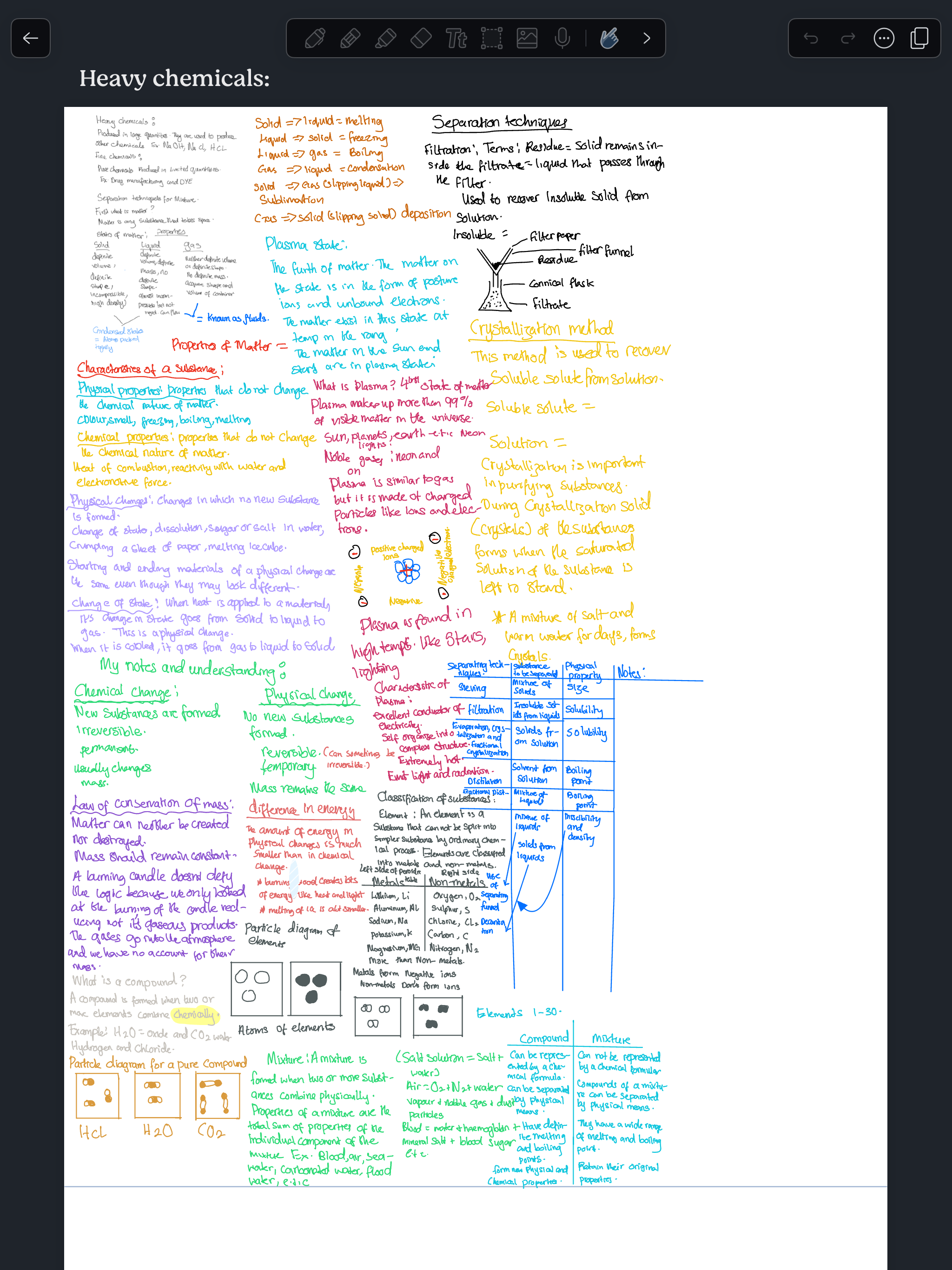What are the separation techniques and properties of matter in heavy chemicals, and how do they relate to chemical changes?

Understand the Problem
The question is focused on the concepts related to heavy chemicals, including separation techniques, properties of matter, and classification of substances. It outlines key methods of separating and analyzing different states of matter in chemistry.
Answer
Separation techniques like filtration, distillation, and crystallization use physical properties; chemical changes form new substances.
The separation techniques for heavy chemicals include filtration, distillation, and crystallization, which are based on properties like solubility, boiling point, and volatility. These processes involve physical changes, as opposed to chemical changes where new substances are formed.
Answer for screen readers
The separation techniques for heavy chemicals include filtration, distillation, and crystallization, which are based on properties like solubility, boiling point, and volatility. These processes involve physical changes, as opposed to chemical changes where new substances are formed.
More Information
Separation techniques are crucial in industries dealing with heavy chemicals as they allow purification and recovery of valuable components without altering their chemical structure.
Tips
Confusing physical separation techniques and chemical changes may lead to incorrect assumptions about the chemical nature of a substance.
Sources
- 2.10: Separating Mixtures - Chemistry LibreTexts - chem.libretexts.org
- Methods of Separation - BYJU'S - byjus.com
- 1.5: Changes in Matter - Physical and Chemical Changes - chem.libretexts.org
AI-generated content may contain errors. Please verify critical information